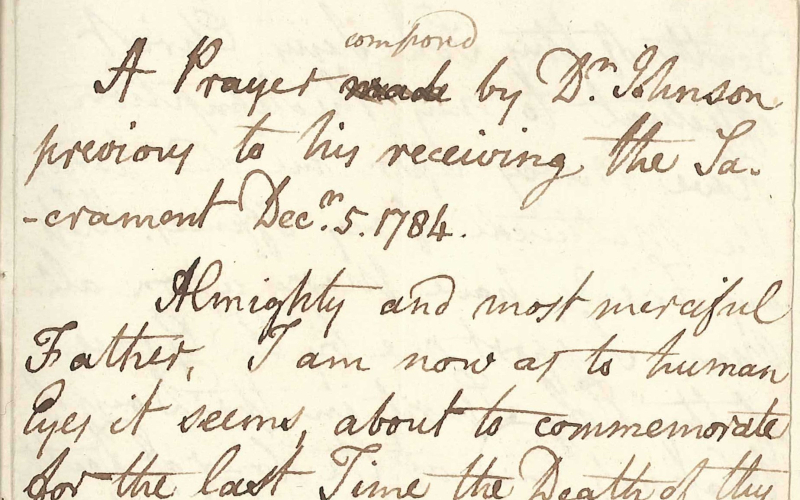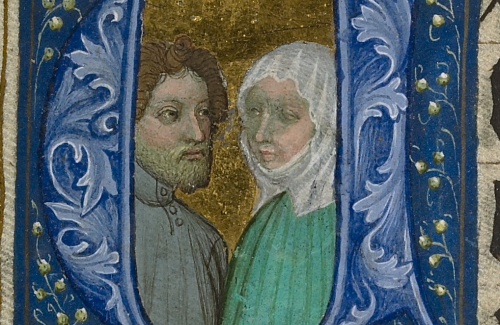#15 Prayers and Meditations
We finished our week with one of the most personal items in the whole collection, Samuel Johnson’s Prayers and Meditations. If you want to read the writing in Johnson’s own hand for yourself, do click the link in our bio to Digital Bodleian.
1. The Prayers and Meditations were published by one of Johnson’s literary executors, George Strahan, after Johnson’s death.
2. They consist of 14 ‘notebooks’, which are really bundles of papers that have been gathered together loosely. Some are sewn, others are just loosely wrapped in a larger piece of paper.
3. One bundle, number 7, has a cover that has been hand-decorated in a geometric pattern (this can also be seen on Digital Bodleian)
4. The earliest entry is from 1738, while the latest is from 1784.
5. The books record Johnson’s private thoughts, largely on his own failings. The prayers are often asking for forgiveness and lamenting his own weakness.
6. One controversial aspect of the prayers are the occasions on which Johnson prays for deceased family members, a practice that contemporary Anglicans considered Catholic and therefore ‘superstitious’.
7. On publication, the Prayers and Meditations were not at all well-received by writers and critics, who felt they exposed Johnson’s character in an inappropriate way.
8. As preparation for publication, Strahan went through all the writings and censored various lines, words and passages. Where Johnson’s original is still decipherable, the it doesn’t seem to be particularly controversial and it is sometimes difficult to understand why Strahan censored them.
9. Johnson used a very typical ink for his time, which is now a dark sepia in colour. Strahan used a black Indian Ink, often so vigorously that the paper was roughened and the ink sank in, completely obliterating the words below.
10. Efforts have been made over the years to retrieve the censored passages. At the latest attempt using state of the art imaging techniques at the Bodleian, we were unable to retrieve anything from under the Indian Ink. However, as technology improves, we may yet uncover it!

